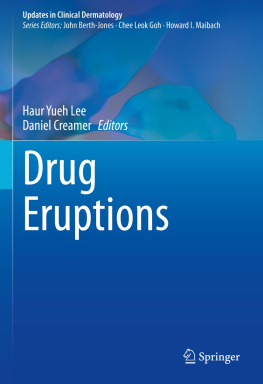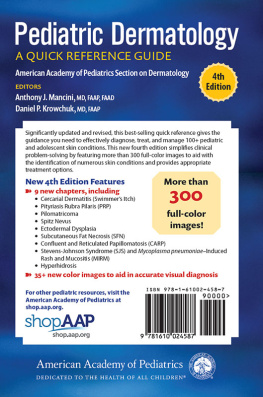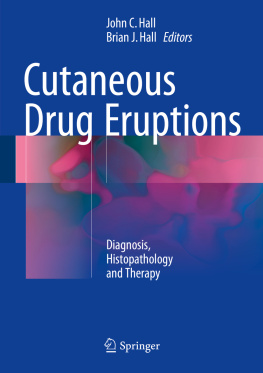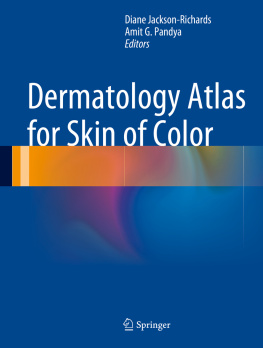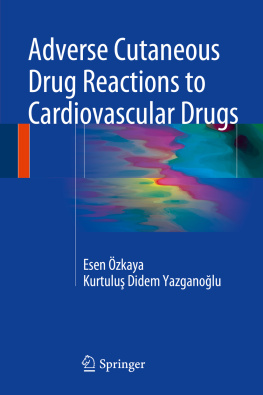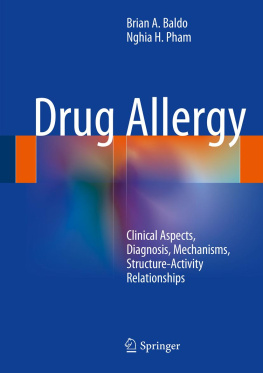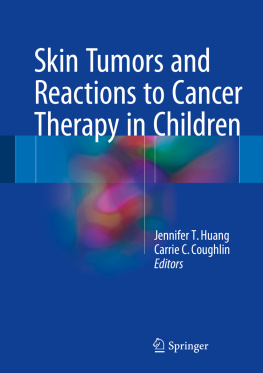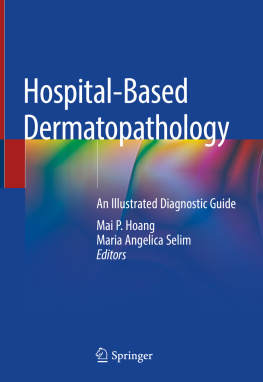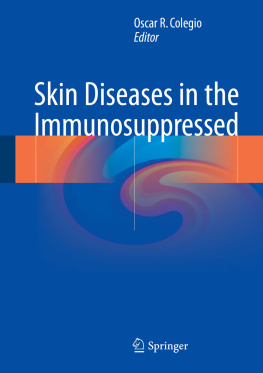Updates in Clinical Dermatology
Series Editors
John Berth-Jones
University Hospitals Coventry & Warwickshire NHS Trust, Coventry, UK
Chee Leok Goh
National Skin Centre, Singapore, Singapore
Howard I. Maibach
Department of Dermatology, University of California San Francisco Department of Dermatology, ALAMEDA, CA, USA
Updates in Clinical Dermatology aims to promote the rapid and efficient transfer of medical research into clinical practice. It is published in four volumes per year. Covering new developments and innovations in all fields of clinical dermatology, it provides the clinician with a review and summary of recent research and its implications for clinical practice. Each volume is focused on a clinically relevant topic and explains how research results impact diagnostics, treatment options and procedures as well as patient management. The reader-friendly volumes are highly structured with core messages, summaries, tables, diagrams and illustrations and are written by internationally well-known experts in the field. A volume editor supervises the authors in his/her field of expertise in order to ensure that each volume provides cutting-edge information most relevant and useful for clinical dermatologists. Contributions to the series are peer reviewed by an editorial board.
Editors
Haur Yueh Lee
Department of Dermatology and Allergy Centre, Singapore General Hospital, Singapore, Singapore
Daniel Creamer
Department of Dermatology, Kings College Hospital, London, UK
ISSN 2523-8884 e-ISSN 2523-8892
Updates in Clinical Dermatology
ISBN 978-3-031-09387-6 e-ISBN 978-3-031-09388-3
https://doi.org/10.1007/978-3-031-09388-3
Springer Nature Switzerland AG 2022
This work is subject to copyright. All rights are reserved by the Publisher, whether the whole or part of the material is concerned, specifically the rights of translation, reprinting, reuse of illustrations, recitation, broadcasting, reproduction on microfilms or in any other physical way, and transmission or information storage and retrieval, electronic adaptation, computer software, or by similar or dissimilar methodology now known or hereafter developed.
The use of general descriptive names, registered names, trademarks, service marks, etc. in this publication does not imply, even in the absence of a specific statement, that such names are exempt from the relevant protective laws and regulations and therefore free for general use.
The publisher, the authors, and the editors are safe to assume that the advice and information in this book are believed to be true and accurate at the date of publication. Neither the publisher nor the authors or the editors give a warranty, expressed or implied, with respect to the material contained herein or for any errors or omissions that may have been made. The publisher remains neutral with regard to jurisdictional claims in published maps and institutional affiliations.
This Springer imprint is published by the registered company Springer Nature Switzerland AG
The registered company address is: Gewerbestrasse 11, 6330 Cham, Switzerland
Preface
Introduction
An adverse drug reaction (ADR) is an unwanted, detrimental response to a medication which is independent of its therapeutic action. Recognition that a medicines benefit is offset by potential side effects is a paradox all doctors must bear in mind as they write a prescription. This consideration represents an important aspect of the clinical encounter and one which informs the formulation of a treatment strategy. Indeed, concern about adverse effects can have a deep influence on prescribing practices, as physicians attempt to Do No Harm. While the inherent risks of any medication need to be assessed by the clinician, the patient must have confidence that their doctor is aware of potential side effects and will advise and guide them appropriately. The study of adverse drug reactions is thus an essential theme in clinical therapeutics.
Cutaneous eruptions induced as a side effect to drugs account for 1520% of all ADRs, with presentations which range from mild to severe. This book addresses the subject of cutaneous drug side effects and aims to summarise current knowledge in both the pathogenetic and clinical domains.
Clinical Approach to a Patient with a Cutaneous ADR
In a patient presenting with new signs and symptoms in the skin, the clinician must consider whether the dermatosis might be caused by a medication. A distinction needs to be made between the aggravation of a pre-existing skin disorder by a drug (e.g. rosacea destabilised by glucocorticoids) and the induction of a primary eruption as manifestation of a drug side effect (e.g. drug-induced exanthem). The former situation is not uncommon and is an important consideration in clinical dermatology; however it is the specific drug-induced dermatoses which constitute the field of cutaneous ADRs.
As in any medical consultation, history-taking is imperative when making an assessment of a potential cADR. There are several contextual features which heighten a clinicians concern about a drug aetiology. The incidence of cutaneous drug reactions increases with the number of drugs taken, while the prevalence of cADRs increases with advancing age. Individuals with complex medical problems and who are in-patients appear to be at greater risk for a drug reaction. The presence of an ongoing systemic infection (particularly herpesvirus infections) may also have a permissive effect on cutaneous drug reactions, irrespective of the anti-microbial medications they are receiving. Studies have demonstrated that female patients tend to be more likely to suffer a cADR.
In many instances a cADR will present as an acute eruption, that is an inflammatory rash which develops suddenly and progresses swiftly to become widespread. These drug reactions are commonly accompanied by symptoms of pruritus or cutaneous soreness, while constitutional symptoms of systemic inflammation (such as fever and malaise) are typically a component of the severe cADRs. Drug reaction with eosinophilia and systemic symptoms (DRESS) is one of the severe cutaneous adverse reactions which is, as its name indicates, a disorder with significant systemic as well as skin involvement. However, some cADRs are not explosive in onset, do not become generalised, and are not associated with systemic features. In these disorders, the evolution of skin signs may be insidious and slowly progressive.
Many cADRs have a clinical presentation which is identical to a non-drug-induced dermatosis. The morphology and distribution of weals in drug-induced urticaria is indistinguishable from that seen in idiopathic urticaria. Therefore, assessment of the physical signs alone is not sufficient to implicate a drug aetiology. Nonetheless some cADRs do have both a specific morphology and a characteristic distribution. An example is the atypical target seen in drug-induced SJS/TEN which can be differentiated morphologically from the classic target of HSV-induced erythema multiforme. In drug-induced SJS/TEN, atypical target lesions tend to be concentrated on the face and central upper torso whereas in erythema multiforme the eruption favours acral skin. An understanding of disease-specific patterns is helpful in the approach to a patient suspected of having a drug hypersensitivity dermatosis.

